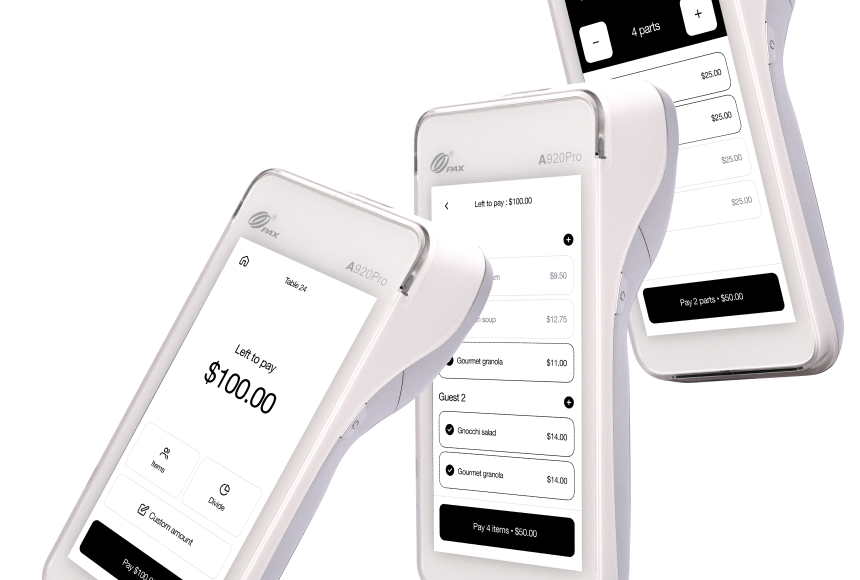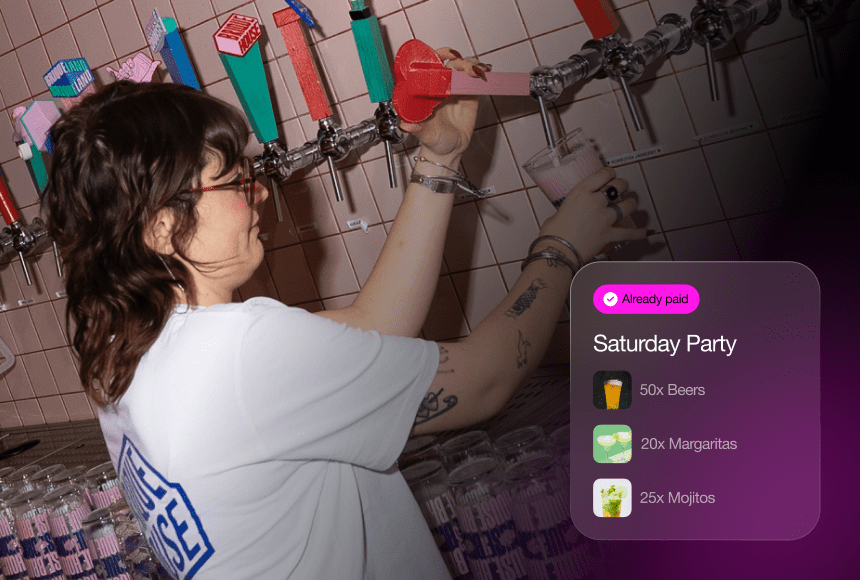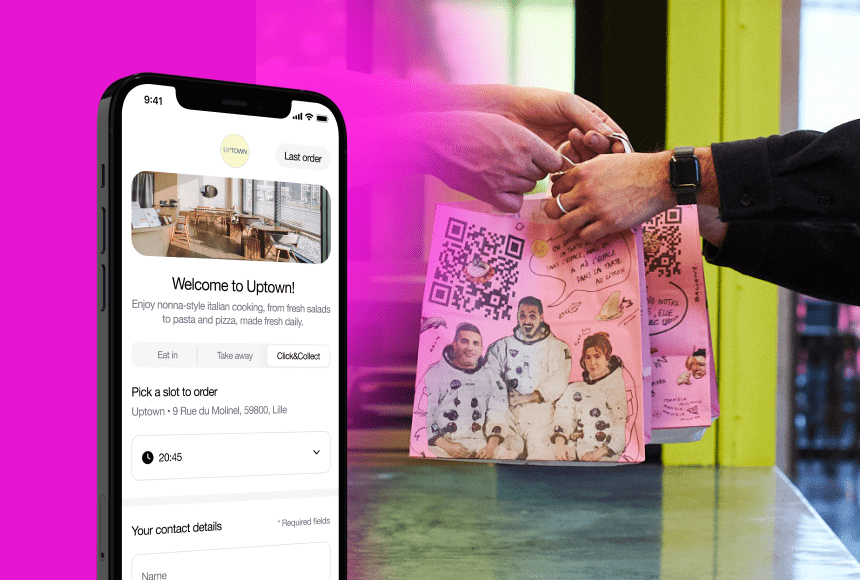
Elevating Your Restaurant’s Efficiency During the Rush
Understanding the Need for a Smarter Payment Terminal
Picture your busiest night of the week. You have a line of guests waiting to be seated, a kitchen firing on all burners, and servers darting between tables. Peak hours like this can be both thrilling and stressful. You strive to serve your guests quickly while still providing a wonderful dining experience. Yet, inefficient payment procedures can slow everything down.
In a high-speed environment, time truly is money. When it takes too long for a table to settle its bill, you risk impatient customers, unsightly queue buildups near your entrance, and even lost revenue because you can’t flip tables fast enough. This is where a smart payment terminal becomes the unsung hero of modern restaurant operations. By simplifying transactions, reducing bottlenecks, and enhancing the guest experience, a next-generation terminal can make a tangible difference at crunch time.
Ten years ago, many restaurants viewed payment terminals simply as a means to process credit cards. Today, that concept has evolved. With everything from contactless options to QR code-based payments, the value of having a feature-rich terminal has increased exponentially. So, whether you’re managing a bustling New York City bistro or a cozy Southern eatery, performance-savvy payment technology matters.
Key Features to Look For in a Smart Terminal
Not all terminals are created equal. Some may be little more than old-school machines, while others become powerful command centers that merge seamlessly with your point-of-sale (POS) system. Here are the features you’ll want to make sure you have on your radar:
1. Contactless Payment Methods
Credit cards equipped with NFC chips. Smartphone payment apps. Smartwatches. Even wearable rings that can pay. These options abound in the modern world. A smart terminal that supports contactless payments streamlines transactions and eliminates the need to fumble with cash or swipe older-style cards.
- Speed benefits: Contactless transactions are often completed in seconds, drastically cutting down on table turnover time.
- Reduced touchpoints: Hygienic advantages matter, especially when guests are concerned about cleanliness.
Statistics from Gallup show that in recent years, more consumers prefer tapping over swiping for the convenience and safety factor. Contactless payment availability has become an expectation, especially among younger diners.
2. QR Code Integration
This is where solutions like sunday can shine, allowing your guests to scan a QR code to view or pay their bill. Integrating QR code technology right into your terminal speeds up payments and fosters higher guest satisfaction. When folks can use their phone to split checks or tip with a simple tap, you can reach new levels of efficiency.
QR code payments also open the door to other add-ons that help your restaurant reputation—like seamlessly prompting a Google review on a guest’s device. A positive online presence is a major advantage in the competitive dining industry.
3. Integrated Tipping Options
Great restaurant culture recognizes the importance of your service staff. Tipping keeps them motivated and fairly compensated. So, your terminal should make leaving a tip easy and intuitive. The more frictionless your tipping process is, the more likely guests are to reward good service with a higher amount. Some advanced devices display suggested tip amounts—like 15%, 20%, or 25%—which encourages gratitude while shaving seconds off the transaction time.
4. Quick Receipt Generation or Digital Receipts
Do your guests prefer paper receipts, digital receipts, or both? By adopting a terminal that offers multiple receipt options, you can keep every type of diner happy. Offering digital receipts through text or email can be a time-saver when lines are long. No need to wait for the printer to spool or jam. Just confirm the email address, and you’re good to go. It often leads to a smoother close-out process too, since many customers don’t need the paper slip at all.
5. Analytics and Reporting
Smart terminals aren’t just about speed; they also help you sharpen your decision-making. Many modern devices offer dashboards that show which items are selling best, how fast tables turn over, and peak transaction times. These insights help you forecast busy periods more accurately, plan staff schedules, and optimize your menu.
Additionally, having real-time reporting can alert you to any anomalies—like cash shortages, repeated transaction declines, or even staff errors. The ability to identify and address these issues quickly will keep you a step ahead.
6. Seamless POS Integration
Nobody wants to spend the dinner rush punching orders into two different systems or re-entering totals. If your payment terminal integrates with your POS, you reduce manual workload and the risk of mistakes. This creates a harmonious flow of data from one system to the other, cutting down on the domino effect of slow transactions and frustrated staff.
- Synchronize orders: A good terminal can pull up checks directly from your POS, so no extra data entry is needed.
- Streamlined training: Staff can learn one system. If your server inputs an order into the POS, they handle the payment from the same ecosystem.
- Accurate reporting: Sales data syncs automatically, making shift reconciliations faster and more accurate.
The Benefits of Speed and Efficiency
When you sharpen your payment process, you get more than just a cool piece of tech behind the bar. You ignite a chain of positive outcomes:
- Higher turnover: Tables become free sooner, so you can accommodate more diners during your busiest shifts.
- Improved guest satisfaction: Quick, hassle-free payment is a tangible perk for time-pressed customers.
- Reduced labor costs: If your front-of-house team can process transactions faster, you may need fewer people on the floor during peak hours.
- Less queue chaos: If you also handle takeout, a speedy terminal can keep lines short, even during lunch rush.
In a sector as competitive as dining, these small improvements build into an edge that can define your restaurant’s success. According to the National Restaurant Association, improved customer service and streamlined operations can directly affect your bottom line by boosting repeat visits and positive word-of-mouth.
Overcoming Common Challenges
It sounds ideal, but any major shift in technology or processes can introduce roadblocks. Let’s examine some typical bumps in the road and how a smart terminal can help you steer around them:
Challenge 1: Slow Connectivity
During peak times, your internet might be overloaded from staff devices, mobile ordering, and streaming music. If your payment terminal can’t process transactions quickly, customers are left awkwardly waiting—and that can lead to online reviews you’d rather not see.
- Solution: Choose a terminal that supports multiple communication modes (Wi-Fi, Ethernet, 4G) and has fail-safes if one connection goes down.
Challenge 2: Confused Staff
It’s a common story: A restaurant invests in new tech, but then fails to train its team thoroughly. Chaos ensues when only one employee really knows how to use the new payment terminal, turning peak hours into a scramble.
- Solution: Provide hands-on training and quick-reference guides. Opt for an intuitive interface that veterans and new hires alike can navigate. Some terminals also have on-screen prompts that guide servers step by step.
Challenge 3: Busywork Drains Efficiency
When your staff has to run a marathon for each table—from taking orders to inputting data in multiple systems—you miss out on valuable time to handle more important tasks, like engaging with customers or delivering dishes promptly.
- Solution: An integrated terminal and POS solution. By cutting out repetitive data entry, you free up your team for tasks that matter—like upselling wines or checking in on a table’s overall satisfaction.
A Real-Life Look: A Busy Bistro’s Perspective
Let’s imagine a neighborhood bistro in the heart of Chicago’s West Loop. During the dinner rush, lines form not just for tables but also at the host stand for takeout pick-up. It’s a packed scenario where servers carry trays of piping hot dishes while simultaneously fielding questions about the drink menu. At the same time, the manager juggles staff scheduling and reorders from the bar’s stock.
Before upgrading their payment terminals, the staff spent an average of two minutes per table to close out checks. Multiply that by 30 tables, and you’re looking at 60 minutes total over a typical peak period. That’s an entire hour of your prime dinner service just for closing customers.
After introducing a feature-rich, smart terminal with contactless payments, QR code integration, and direct POS syncing, the time to settle a bill shrank to less than 30 seconds—because guests can pay, tip, and get a digital receipt in one streamlined flow. The results? Shorter wait times, faster table turnover, happier diners, and more revenue. Staff morale soared because they no longer felt overwhelmed by a queue of people waving credit cards.
This anecdotal example showcases how the right technology can create a ripple effect of efficiency, from reducing wait times to freeing up staff for more core tasks like table service and guest engagement. Those benefits can even harness intangible improvements, such as better online reviews, because guests feel you respect their time.
The ROI of Time-Saving Payment Terminals
Restaurant owners are, understandably, careful about each investment. You might think purchasing a premium smart terminal could bite into your margins. However, the return on investment can surprise you:
- Time savings: If you reclaim even 30 seconds per transaction, multiplied by hundreds of transactions a day, that’s valuable staff hours regained.
- Reduced errors and shrinkage: When integrated with your POS, the chance of mis-keying an amount all but disappears. You also get a tighter handle on your cash flow.
- Increased tipping: Users often tip more when digital prompts suggest amounts. That’s a morale booster for staff, which can decrease turnover in the long run.
- Customer loyalty: Frequent diners note how streamlined your payment flow is. They come back for that easy experience—and often bring friends.
Ultimately, the question isn’t just “How much will a smart terminal cost?” but “How much more revenue or savings can I generate by embracing it?” Save an hour or two of staff time a day, keep more tables turning, and the initial cost starts to look very small in comparison to the ongoing benefits.
Best Practices for Implementation
So, you’re convinced that a time-saving payment terminal can be a game-changer. Now, how do you actually put it into practice for peak-hour efficiency? Here are a few suggestions:
1. Conduct a Quick Audit
Review your current workflows. Where do lines get hung up? Is it at the server station where guests wait to pay? Are they waiting for a paper check? Is your staff often struggling with slow connections? Identify the choke points before introducing any new hardware so you know precisely what you aim to fix.
2. Pick the Right Technology Partner
Take time to choose a solution with a proven record for reliability. Ask about downtime percentages, service response times, and integration with your existing POS or reservation system. If you’re considering a provider that also offers a helpful tool like scanning a QR code for quick payment—like sunday does—it needs to mesh well with your operations.
3. Invest in Proper Training
Any new technology is only as good as the people using it. Schedule a short staff meeting or even role-playing exercises to let everyone handle the new equipment in a simulated rush. Make sure employees know how to troubleshoot basic issues themselves, such as checking connectivity or reprinting receipts. Simple confidence-building sessions can save you from meltdown when the dinner crowd arrives.
4. Promote Adoption Among Guests
Even if you’ve spent hours training your staff to operate a sleek new terminal, it helps if your customers know how quick and easy it is for them, too. A few small signage pieces at the hostess stand or a gentle mention from servers—“By the way, you can scan this code to settle up right from your seat!”—can drive adoption. If your terminal allows for contactless or QR code payments, highlight that advantage. People love a hassle-free restaurant experience.
5. Monitor, Measure, and Adjust
Once you roll out your new technology, monitor transaction speeds, staff feedback, and overall guest satisfaction. Are you seeing fewer lines near the register? Is the staff less stressed when closing out tables? Track these metrics weekly or monthly to refine your approach. Adjust the tipping prompts, integrate loyalty programs, or maybe link to your Google business page so that satisfied guests can leave positive feedback. Think of your payment terminal as an evolving tool that grows with your restaurant’s needs.
A Quick Comparison: Old-School vs. Smart Terminal
| Aspect | Old-School Terminal | Smart Terminal |
|---|---|---|
| Processing Speed | Multiple steps, slower payment | Automated, contactless or QR code |
| Tipping Interface | Manual entry, sometimes skipped | Suggested percentages, easy to apply |
| Integration | Standalone device | Syncs with POS, real-time updates |
| Receipt Management | Paper-only, frequent jams | Paper or digital receipts |
| Enhancing Guest Experience | Functional but slow or outdated | Fast, interactive, fosters review-sharing |
This quick overview helps illustrate just how the right technology can dramatically improve your workflow. It’s not just about a machine that processes transactions—it’s about a holistic tool that accelerates service and improves your guests’ experiences.
Crafting a Restaurant Experience That Shines
At peak times, every second counts. But so does every smile, every handshake, and every positive dining memory. A fast, hassle-free payment is an integral piece of the overall puzzle that keeps customers returning to your tables. By selecting a smart terminal that integrates seamlessly with your POS, offers lightning-fast contactless payments, and supports tipping and review features—like sunday does in a subtle, yet powerful way—you equip your staff to shine when it matters most.
With these ingredients, you bake a more efficient, more welcoming, and ultimately more profitable operation. Streamlining your restaurant’s payment process should never come at the expense of warmth and hospitality. A truly great solution blends these elements so flawlessly that your diners remember the delicious meal and impeccable service, not the time they spent waiting for the check.
Frequently Asked Questions (FAQ)
Is a smart terminal only beneficial for large restaurants?
Not at all. Any establishment that encounters busy periods—large or small—can benefit from reduced transaction times and a more seamless payment experience. Small neighborhood cafés, food trucks, and mid-sized venues also see improvements in customer satisfaction and staff efficiency.
Do I need special internet to support contactless or QR code payments?
Most terminals only require a stable Wi-Fi or Ethernet connection. As a backup, some also support cellular connections. It’s wise to ensure your internet bandwidth can handle peak traffic, so if you have trouble with streaming or POS updates, consider upgrading your plan.
How do I train my staff to use the new terminal quickly?
Hands-on practice is key. Provide short training sessions where employees can simulate different scenarios—like splitting checks or adding tips. If the user interface is intuitive, most staff members adapt quickly, especially if they understand the immediate benefits, such as faster table turnovers and happier guests.
Will introducing contactless payment hurt my cash business?
Offering contactless payment doesn’t negate your ability to accept cash. It simply gives customers more choices. In fact, offering multiple ways to pay can lead to a broader customer base. Some guests prefer cash, others prefer digital wallets—why not cater to both?
What if a guest doesn’t feel comfortable using a QR code?
You can still offer them a printed check or a traditional swipe or chip payment option. Flexibility is essential. Have your staff briefly explain the QR option, but allow customers to choose what feels right. Typically, once people see how quick and easy it is, they’re willing to give it a shot.



